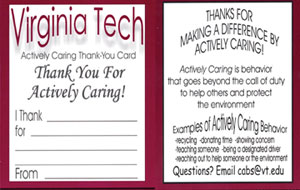
“It may be that the greatest tragedy of this period of social transition is not the blaring noisiness of the so-called bad people, but the appalling silence of the so-called good people.” — Martin Luther King, Jr.
Most people care, but too often people fail to act on their caring. They seemingly lack the courage to step to the plate to prevent potential harm to another person. In fact, courage is necessary but not sufficient for actively caring. I have addressed this courage challenge in three priorISHNarticles. Here, I take you beyond the lessons in those other presentations, where I distinguished between moral and physical courage (in November and December 2007) and entertained the common excuses we use to justify our lack of moral courage (February 2008).

The courage dimension
Drs. Peter Drucker and Stephen R. Covey claim organizations need to progress to a “Knowledge-Worker Age” whereby human potential is released from a hierarchical controlling mindset that stifles individual initiative. All the six sigma, behavior-based safety, and customer-focus directives will not make a difference unless people have the courage to speak up and act on behalf of the performance-improvement process. Without courage most well-intentioned initiatives become another “flavor of the month.”Courage is not a human trait, but a person state that varies according to certain circumstances and interpersonal interactions. These are reviewed below. First, we need to consider another dimension of actively caring.

Figure 1. The Actively-Caring Thank-You Card used at Virginia Tech
The compassion dimension
Real-world demonstrations of leadership for injury prevention and performance improvement show the critical importance of another factor of compassion. Leaders most effective at bringing the best out of people are competent, committed, courageous and compassionate (as introduced in my January 2007 contribution toISHN).Compassionate leaders are considerate and responsive to the feelings and circumstances of the people they direct and/or support. They listen and speak with empathy. While courage increases as a function of a person’s relevant competence and commitment, the positive human impact of one’s courage is a direct function of his or her compassion. The outcome is actively caring.
Over the course of history, many leaders have made a difference with notable competence, commitment, and courage. But those who left a positive legacy were also compassionate. In other words, one’s mark in history can be beneficial or detrimental to human welfare, as exemplified by the contrasting legacies of Mahatma Gandhi vs. Adolf Hitler. Positive contributions to humanity reflect “actively caring”.
Authentic and effective actively caring requires courage plus compassion. A person who is competent and committed in a situation calling for actively caring might not have the courage to act. But when it comes to interpersonal intervention, courage without compassion can be ineffective or even perilous. How can a culture increase actively caring?
Cultivating an actively caring culture
Many factors that influence one’s propensity to actively care can be subsumed under the general label – culture. A work culture, for example, can incorporate an accountability system that encourages interpersonal helping, and the daily interactions of people influence certain person states that affect one’s propensity to go beyond the call of duty for another person’s safety. In other words, the frequency of actively caring varies directly according to extrinsic response contingencies and indirectly as a function of certain dispositional person states.The direct approach
For almost 20 years, I have promoted the use of a special “Actively-Caring Thank You Card” at my university for recognizing individuals following their people-based discretionary behavior. As depicted below, the front of this brightly colored card includes designated spaces for the name of the person being recognized, the particular actively-caring behavior, and the name of the observer. Several organizations have customized this thank-you card for their culture. I have seen this simple thank-you-card process cultivate a sense of interdependence and belongingness throughout a workgroup, as well as help people feel good about their actively caring.In their 2005 book, Measure of a Leader, Aubrey and James Daniels describe a creative device they have used successfully for years to motivate interdependent actively caring throughout an organization. Specifically, they hang a chart in a conspicuous location that lists the names of all employees in a certain work area. Then they give each person a sticker identifying that individual. Subsequently, whenever a worker is helped by another, that person puts his or her identifying sticker on the chart, next to the name of the person who actively cared. The Daniels brothers report dramatic culture change as a result of this public accountability system for interpersonal helping behavior. “Not only does it give recognition for those who help, but it is an antecedent for the others to take the initiative in finding ways they can help other team members.” (p. 158).
The indirect approach
Genuine appreciation and recognition can have dramatic positive effects on a person’s attitude, mindset, and disposition. Indeed, such commendation can enhance each of the five person states shown empirically to increase one’s propensity to actively care — self-esteem, self-efficacy, personal control, optimism, and belongingness. Thus, a recognition system that directly acknowledges actively-caring behavior can result in a spiraling cycle of propitious culture change. Positive regard for people’s helping behavior rewards and thus increases the target behavior directly, while simultaneously feeding the person states that set the occasion for more actively caring.Next month I will address ways to heighten the five person states that influence one’s readiness to actively care. At this point, you understand the role of courage and compassion in cultivating an actively-caring culture, and you realize the potential harm of remaining silent in the face of at-risk conditions and behaviors.
